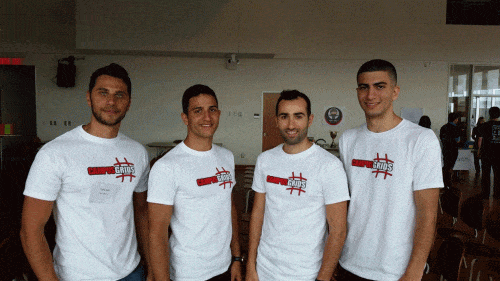By Arielle Follett

When Carleton student Elias Fares was as an undergrad at Carleton University, he found himself missing out.
“I found myself overwhelmed with school-work and not having the social aspect of student life,” he said. “I then decided to create Campusgrids as a hub for students to help them get involved and engaged on campus.”
Campusgrids started as a website before he brought the idea to three childhood friends, all Ottawa students. The group soon decided to take down their website and create a mobile app.
“The app enriches the student experience and campus life by adding a new channel for clubs and societies to reach more students too,” said Fares.
Campusgrids was released locally in Ottawa in September 2013 as a test-run. The team welcomed feedback and requests from users which helped shape the app. As the app secured funding, the team hired two students – one being an Algonquin mobile application design and development student.
We are looking towards the future and how to make our app a global success.
The team of six worked full-time over the summer to build the latest version of the app, now released and available for all colleges and universities across Canada.
“We are all new to entrepreneurship,” said Ryan Elias, chief marketing officer of the application. “We’re continuously learning the many branches of the start-up life. We are looking towards the future and how to make our app a global success.”
The group is on track for this goal, already finding success with their current audience.
“When we meet with organizations on campus and talk about Campusgrids with them, we usually get a lot of positive feedback,” Fares said. “They get excited about the app and are surprised that such a service exists.”
Fares has went on to study more in the technology field, enrolling in the human-computer interaction Master’s program at Carleton University.
“It deals a lot with design and the way people interact with technology,” Fares said.
“The hardest part of making an app is deciding what you want it to do and how you want it do it,” he said. “It’s usually best to jump into it and start developing and then go from there. It is very easy to learn how to code and develop these days. Sitting down and coding is the easy part, if you get stuck anytime there are always online communities and forums that can help you with your developer issue.
“The best way to learn is to do.”


